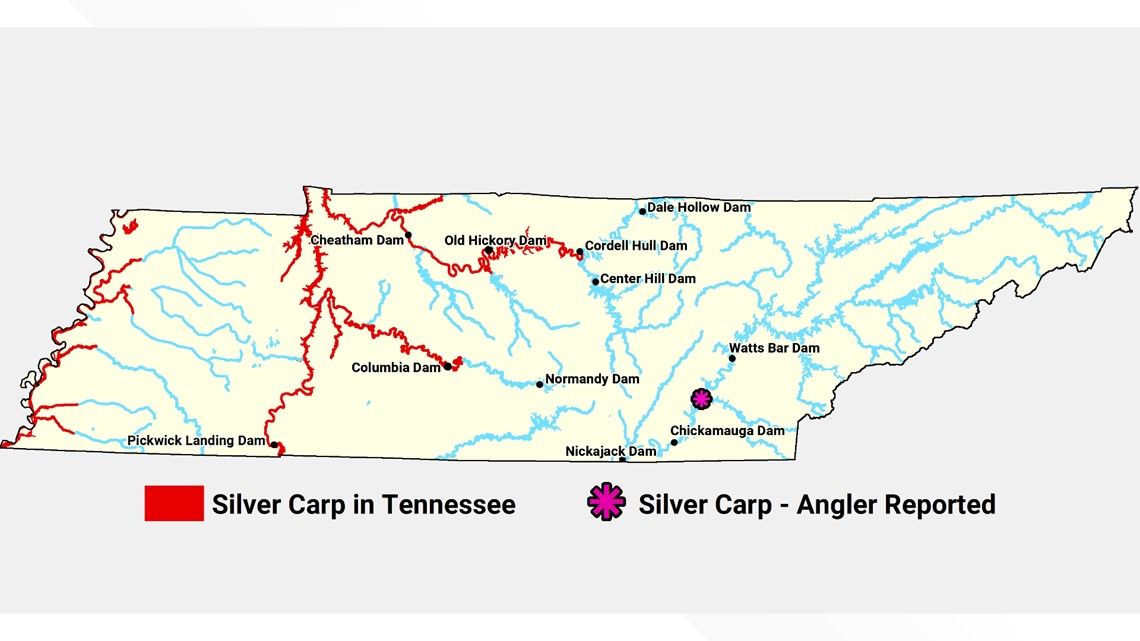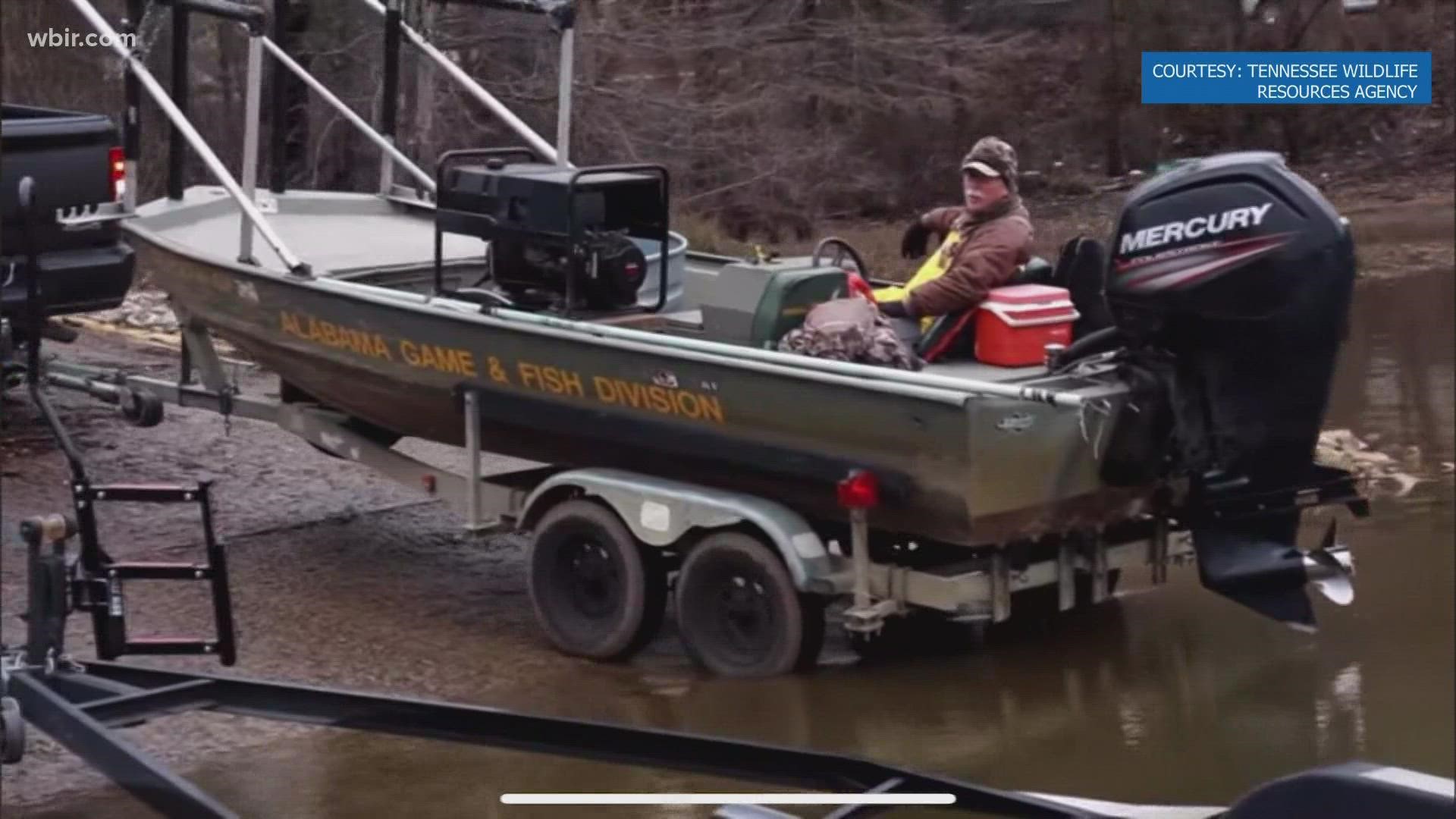KNOXVILLE, Tenn. — Invasive carp continue to plague Tennessee waters, so state and federal wildlife authorities are taking the fight underwater to track how they move in hopes of finding ways to make it harder for them to spread elsewhere.
There are four species of invasive Asian carp state wildlife authorities are worried about: Silver Carp, Bighead Carp, Black Carp and Grass Carp.
Silver carp, in particular, are considered to be a real problem because of their large size and tendency to leap out of the water when startled. This poses the real potential for injury for boaters and anglers, and their feeding habits pose the danger of outcompeting other marine life to the point smaller fish die out.
To fight the fish, the Tennessee Wildlife Resources Agency is turning to underwater tracking implants. It recently went out on Pickwick and Cheatham lakes on the Cumberland River for three days with the U.S. Geological Survey to target silver carp and implant acoustic tags inside them.
A total of 125 carp were scooped up from each lake, and teams made quick work of them by stunning the fish, making a small incision, implanting an acoustic tag, and then sewing them up before releasing them downstream below the dams. The researchers want to see how the fish move upstream and up through dam locks to find ways to better stop their movements.
A few years ago in 2019, the U.S. Fish and Wildlife Service installed a BioAcoustic Fish Fence on Barkley Dam in hopes it could be a game-changer in keeping the carp from passing through the dam lock.
The barrier uses a combination of sound, lights and bubbles to discourage the fish from entering Barkley Lock, and the TWRA said it is showing promise as a deterrent.
“Though no deterrent is expected to be 100 percent effective, even moderate levels of deterrence can significantly reduce the number of fish moving upstream through locks,” said Cole Harty, TWRA Aquatic Nuisance Species Coordinator. “Deterrents, when coupled with commercial harvest near the source of carp immigration, is the best strategy we have to prevent the spread of carp to waters upstream.”
While there are no widespread reports of invasive carp in East Tennessee waters yet, in 2020 the TWRA confirmed the presence of silver carp in Chickamauga Lake. An angler said the a carp jumped into their boat as he started his motor, saying he noticed 15 to 20 more near the surface showing feeding behavior.
The discovery means it might only a matter of time before the invasive carp are widespread in East Tennessee -- a fate the TWRA hopes to prevent given the popularity of fishing and boating in the area. The fish are already widespread in some West and Central Tennessee waterways.


Commercial anglers participating in the Asian Carp Harvest Incentive Program have also been able to fish up more than 10 million pounds of invasive fish from the Kentucky and Barkley reservoirs.
“Commercial harvest is a key strategy to defend our waters from the impacts and expansion of invasive carp,” Harty said. “The other key strategy to prevent the spread of carp to waters upstream is deterrents.”
In the meantime, the TWRA is asking anglers and boaters to be vigilant and to help them track the invasive fish. If you spot silver carp in East Tennessee, the TWRA asks that you report it to ans.twra@tn.gov. with a photo in your report, and freeze the fish if possible.

